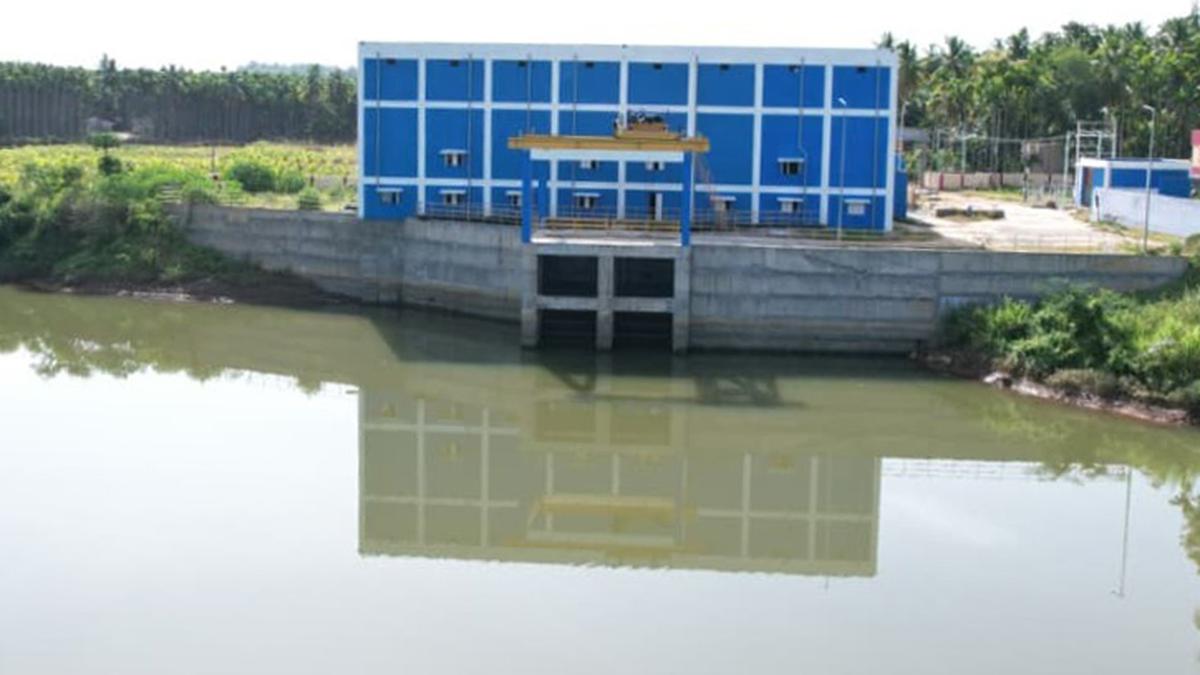The Pilloor III water supply scheme faces periodic disruptions during release of surplus water from Pilloor Dam, affecting the 130 million litres a day it draws from the River Bhavani for Coimbatore city.
The city’s total drinking water supply, including Pilloor III, is about 330 million litres per day, sourced from various schemes.
The project, developed to meet the city’s growing water demand, was implemented by the Tamil Nadu Water Supply and Drainage (TWAD) Board. Work began in 2020 and was completed in February 2024 at a cost of ₹780 crore. The TWAD Board treats and supplies the water to the Coimbatore Corporation for distribution.
According to TWAD officials, the Pilloor Dam, with its toe (downstream base) at 377 metres above sea level, releases water from its reservoir when the spillway gates are opened. The released water flows downstream to the Pilloor III headworks, 13 km away at 300 metres above sea level, near the barrage operated by Tamil Nadu Green Energy Corporation Limited (TNGEC) at Samayapuram village in Mettupalayam. The headworks serves as the raw water intake point for the scheme.
During normal operation, the dam discharges between 3,000 and 6,000 cusecs. In periods of heavy rainfall, when the water level reaches about 97 feet of the full 100 feet, the spillway gates are opened to release surplus water, with discharge volumes exceeding 10,000 cusecs.
The steep 77-metre elevation drop over the 13-km stretch results in a high-velocity flow that, compounded by the opening of the nearby barrage gates for structural safety, prevents adequate water accumulation in the intake well. Consequently, the pumping motors cannot operate due to insufficient submersion, increasing the risk of mechanical vibration and damage.
The sudden surge increases downstream velocity, making it difficult to maintain the minimum required water level of 302 metres in the intake well. The well, with a bed level of 298 metres (above sea level) and a height of 13.2 metres, must retain at least four metres of water depth to operate its six pumping motors—four in use and two on standby—each capable of drawing 32,500 litres per minute.
TWAD officials said the Pilloor III headworks was sited to ensure water availability even during drought-like conditions, making use of the river course and regulated flow from the barrage. However, in flood-like situations caused by surplus releases, water levels at the intake can only be maintained if the barrage gates remain closed. In contrast, the Pilloor I and II headworks, located upstream at the dam, are not affected by this situation. This year, surplus release from the dam occurred four times, each time halting intake operations.
TNGEC officials said the Samayapuram barrage, equipped with six gates and two five-megawatt generators, is designed to safely hold flows of around 6,000 cusecs, maintaining a water level of 305 metres without affecting TWAD’s operations. However, when surplus releases raise inflows to 15,000–25,000 cusecs, any volume exceeding 6,000–7,000 cusecs necessitates opening the gates to prevent structural damage and downstream flooding.
Corporation Commissioner M. Sivaguru Prabakaran said surplus release from the dam are infrequent but cause three to four days of disruption, affecting distribution of the 130 MLD drawn under the scheme to areas linked across all 100 wards. He said the TWAD Board and the Corporation were jointly working to identify and implement a permanent solution.
Officials said preliminary options under consideration include constructing a dyke across the river near the headworks, installing slotted pipes, and adjusting barrage operations to avoid complete gate closure, thereby maintaining intake levels during surplus water releases. They added that implementation can only take place next summer, when water levels are lower.
Published – August 12, 2025 08:46 pm IST



















